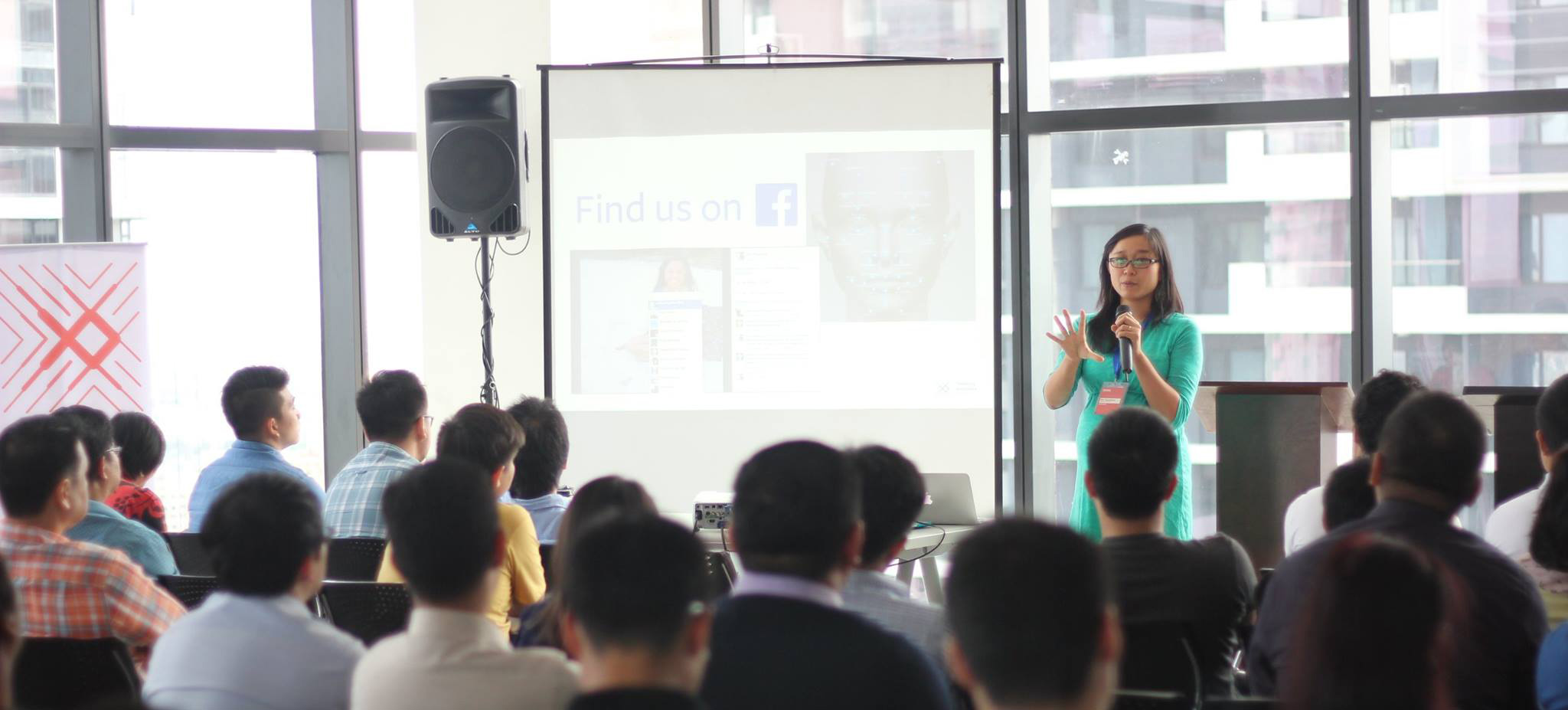The language landscape of the Philippines in 4 maps
August 10, 2016
If you were to randomly pick two people from anywhere in the Philippines, there’s a roughly 76% to 84% chance that they grew up speaking different languages.
This is based on the country’s Greenberg Linguistic Diversity Index, which estimates a place’s linguistic richness on a scale of 0 to 1. A place in which every person speaks a different language would have a diversity index of 1, while a country in which every person speaks the same language would have an index of 0.
While the language website Ethnologue pegs the country’s diversity index at 0.84 or 84%, our own computations based on data from the 2010 Philippine Census puts the figure at around 76%. Even at the lower figure of 76%, the Philippines would still be more linguistically diverse than as many as 190 other countries.

This remarkable fact is rarely celebrated during the country’s Buwan ng Wika (Language Month), which, every August, promotes the use of the Tagalog-based national language, Filipino. Yet more than six out of every 10 Filipinos speak languages other than Tagalog at home.
Because we think all of the Philippines’ 187 languages are worth celebrating, we’ve put together a series of maps and charts to visualize the colorful and delightfully complex Philippine language landscape. [Read about our methodology.]
90% of Filipinos speak one of 10 languages
While there are nearly 200 unique languages and dialects spoken by the Philippines’ nearly 100 million residents, over 90 percent of Filipino households speak one of just 10 languages. This map shows the provinces where these top 10 languages are the most widely-spoken.
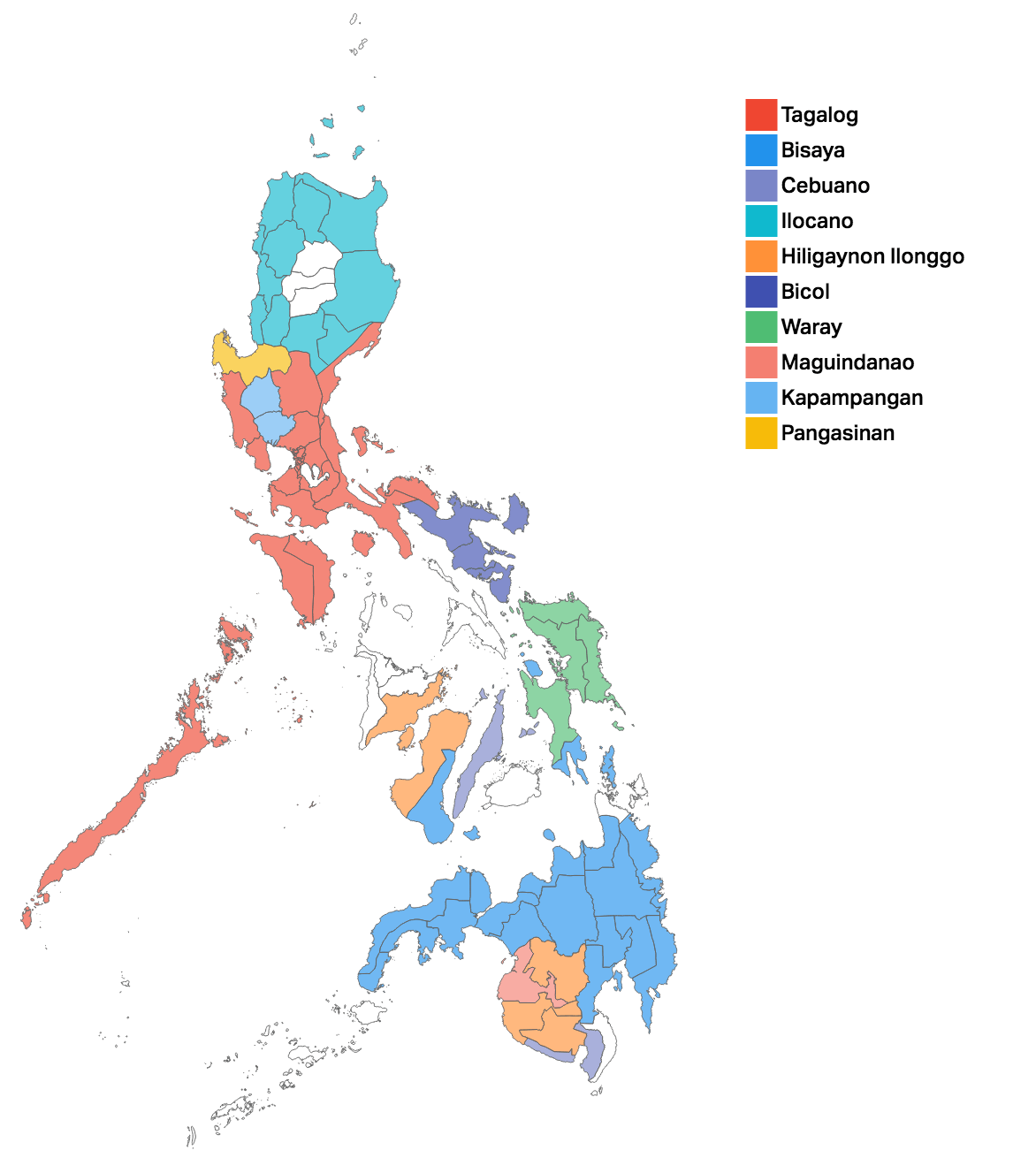
Language diversity across the country
But just looking at the top language in a place can obscure its linguistic richness. Linguistic diversity varies from province to province. Some of the most multilingual provinces are also the most physically rugged and home to more indigenous peoples.

The more multilingual provinces
The provinces of Mindanao are generally more diverse than elsewhere in the country. The province with the highest diversity index is Sarangani, where you’re more likely to meet a native speaker of Maguindanao or T’boli than a native speaker of Tagalog. In North Cotabato, the second most multilingual province, the most spoken languages are Hiligaynon, Maguindanao, and Cebuano.
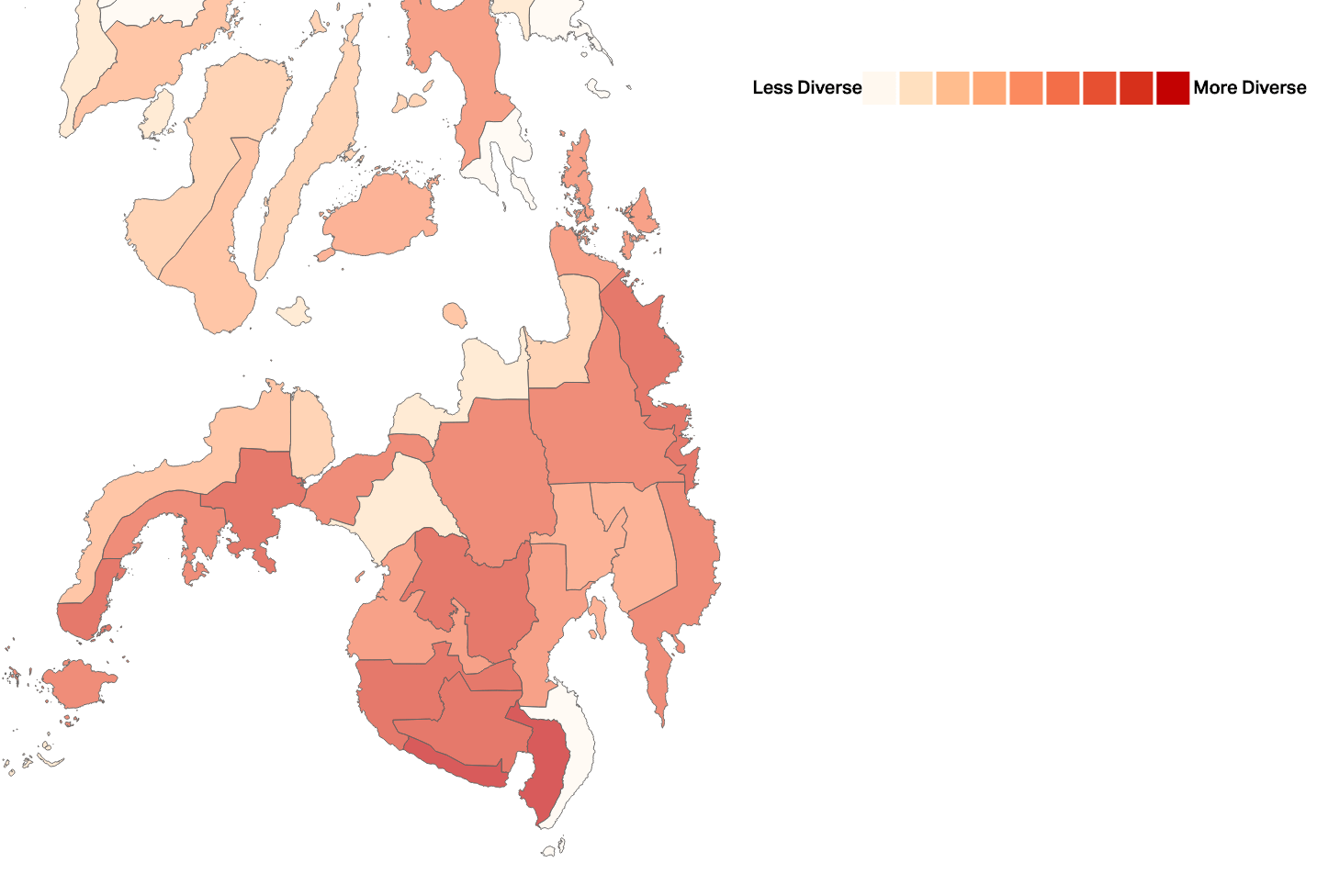
The more multilingual provinces
In Luzon, the mountains of the Cordillera are an island of linguistic diversity surrounded by more monolingual, Ilocano-speaking provinces. Ifugao province, where more than half the households speak Tuwali or Ayangan, is the country’s third most multilingual province, followed by Mountain Province, where over half of the households speak Kankanaey and Bontok.
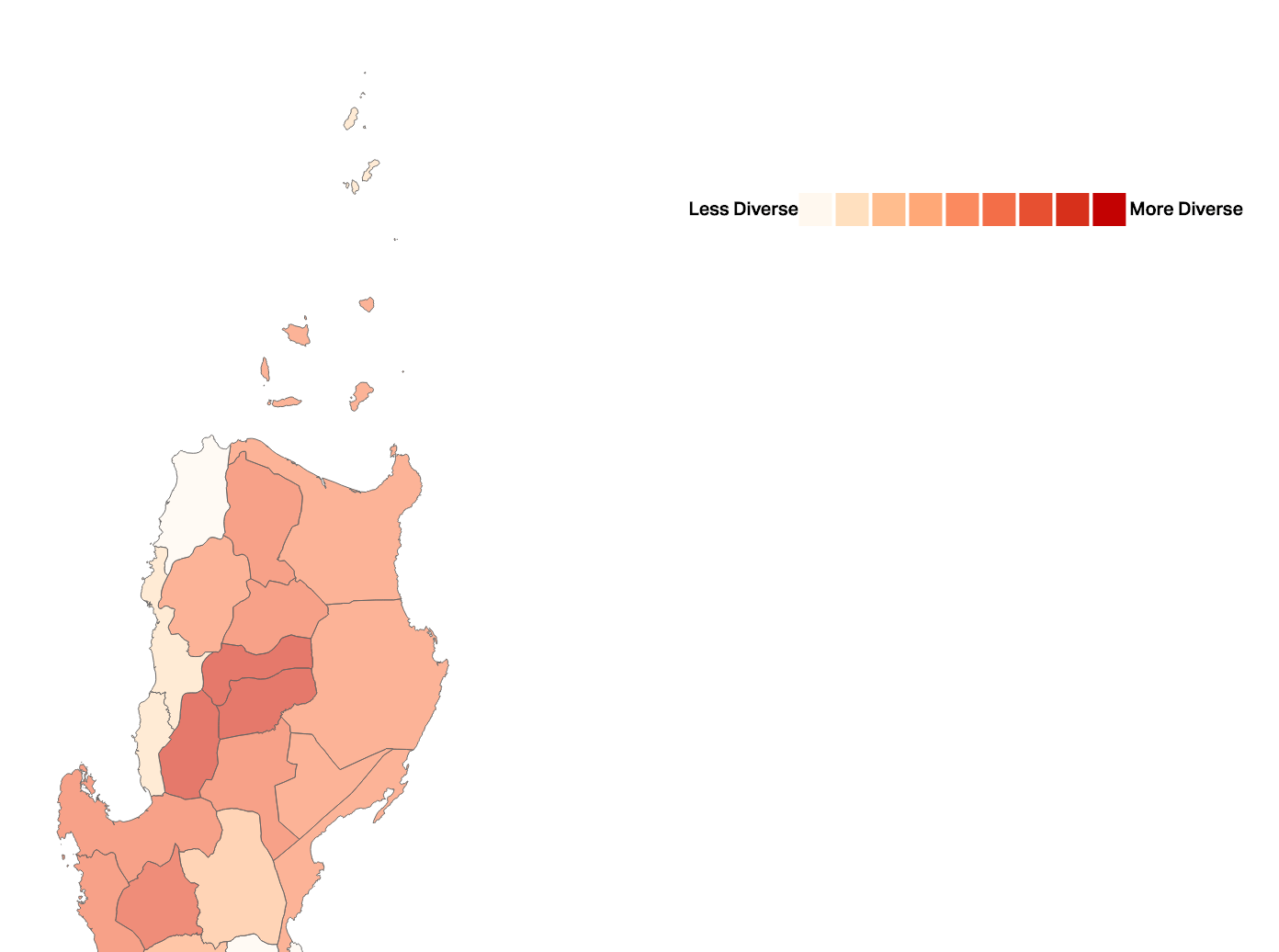
The more monolingual provinces
Many of the provinces near Metro Manila are also among the country’s most monolingual. These include many of native Tagalog-speaking provinces like Bulacan, Marinduque, Batangas, Laguna, and Rizal. Bikol-speaking Catanduanes and Sorsogon and Waray-speaking Eastern Samar are some of the most monolingual provinces farther away from the Tagalog-speaking regions.
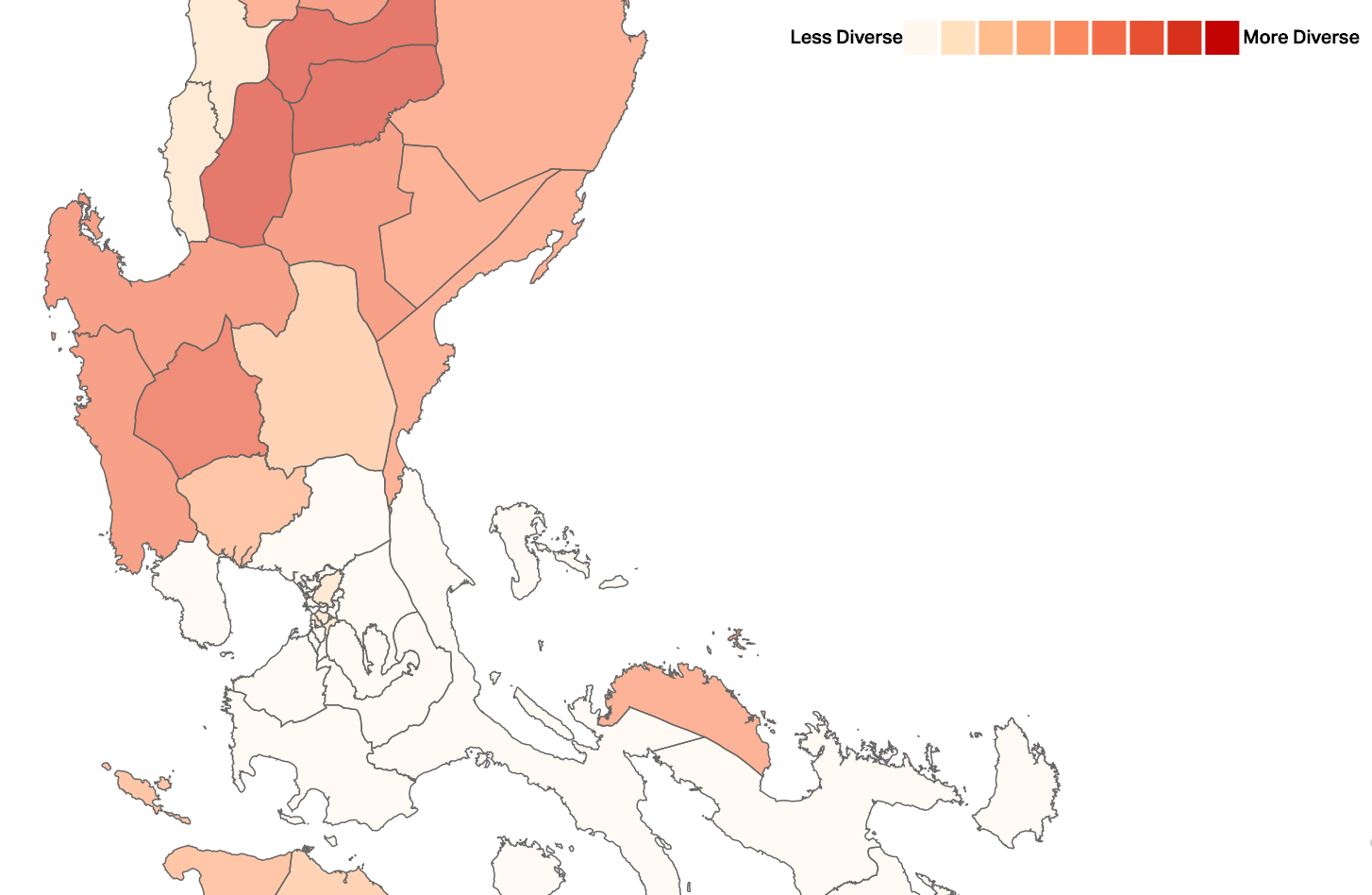
Top languages aside from Tagalog/Bisaya in Metro Manila
Even though there are at least 120 languages spoken in Metro Manila – more than in any other province – the national capital region is still pretty monolingual with a diversity index of just 0.09, though this varies slightly from city to city. Tagalog and Bisaya are the first and second most-spoken languages in almost all cities.
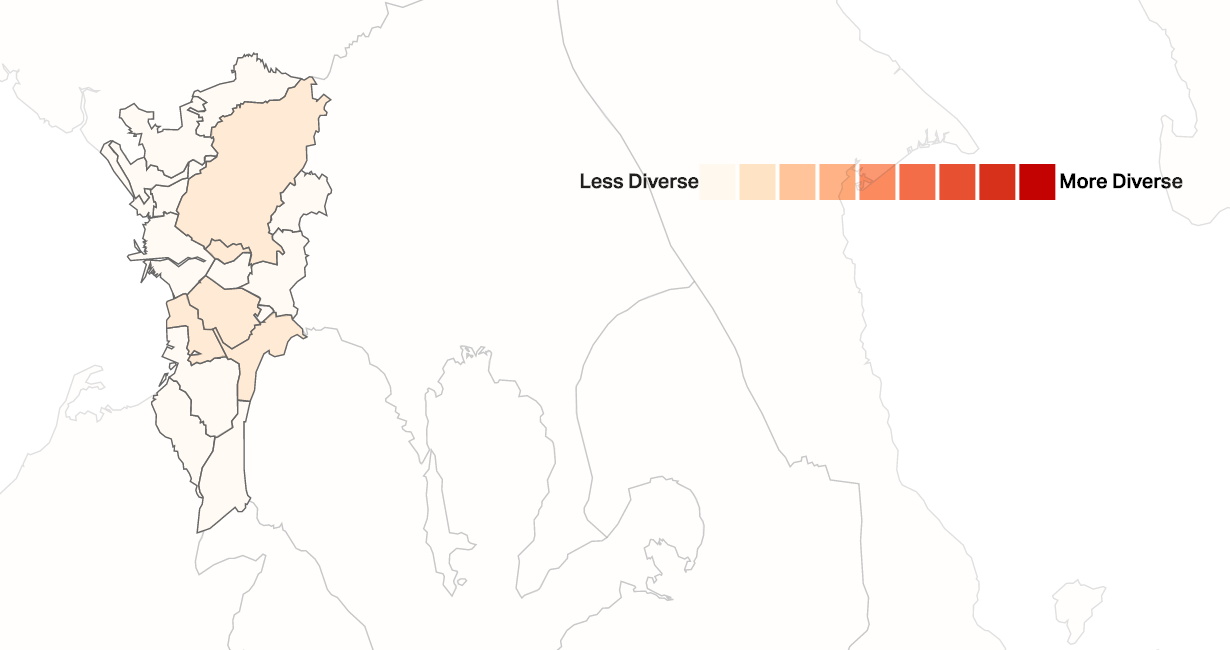
Top languages aside from Tagalog/Bisaya in Metro Manila
But if we look at the most-spoken language in each city aside from Tagalog or Bisaya, we learn that there are robust Bikolano communities throughout the whole Metro, with some pockets of Ilocano, Maranao, Waray, and Ilonggo. Meanwhile, American English is a major language in Makati and Alabang, while Chinese is dominant in Manila and San Juan.
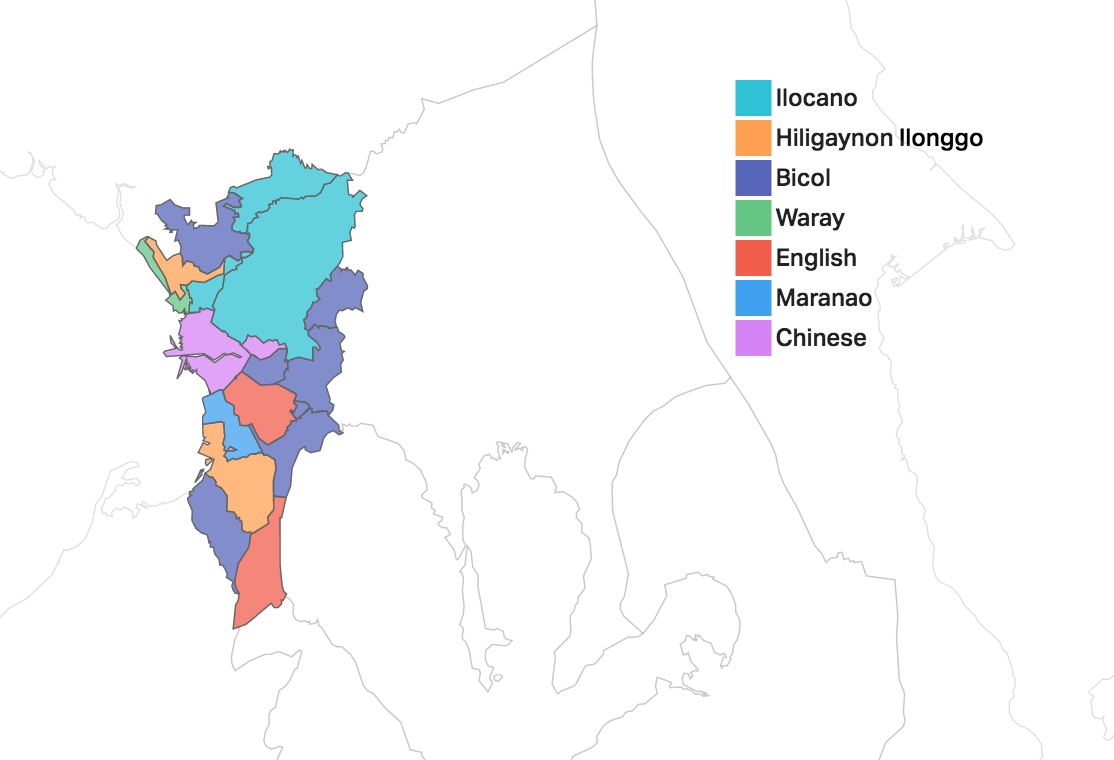
What languages are spoken where? Explore our language map.
What patterns can you find in the Philippine language landscape? Use this interactive to explore where the top 50 languages in the country are spoken:
Methodology
The data for this blog post came from the 2010 Census on Population and Housing, which can be found on the Philippine Statistics Authority website. The census counted the number of households per province that reported using each of 187 Philippine languages.
To compute the linguistic diversity per province, we first calculated the proportion of households in each province that speaks a different language. We then squared each of these proportions, and subtracted their sum from one.
In our language density heat map, we define "density" as the proportion of a province's total households that speak a certain language. Every layer of our interactive map uses a color scale based on values that are unique to the selected language. While the lightest color always represents zero density, the darkest color always represents the maximum density for that particular language. Maximum values vary from one language to another.


